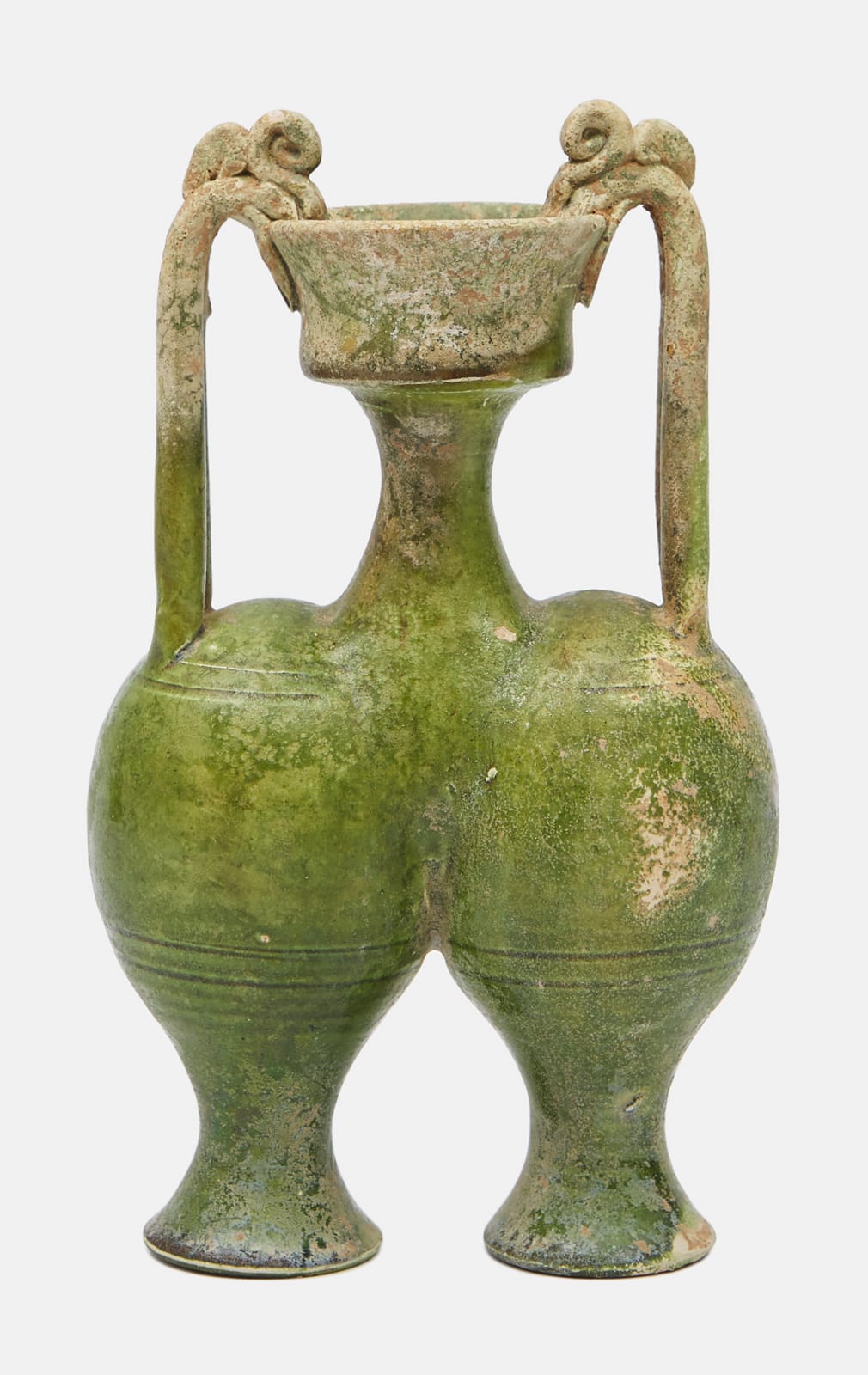-
Artworks

Anon
A Chinese green-glazed conjoined amphora, Sui dynasty, 7th centuryglazed terracotta7 5/8 x 4 3/8 x 2 1/8 in. | 19.5 x 11 x 5.5 cmAlthough the Sui dynasty was relatively short-lived (581–618 CE), it was of critical importance to the history of Ancient China. The Northern and Southern dynasties were united and reforms were...Although the Sui dynasty was relatively short-lived (581–618 CE), it was of critical importance to the history of Ancient China. The Northern and Southern dynasties were united and reforms were introduced to centralise decision making.
During this period, Chinese terracotta artworks began to echo the objects imported from the West via the Silk Road. This trade route, which linked Europe to Asia, brought economic, political, religious and cultural changes across the region, compelling Chinese craftsman to recreate versions of Western pottery adapted to local culture and taste.
Silver and glass vases from the Roman Empire would have served as inspiration for the present conjoined amphora which incorporates two oval-shaped vessels decorated with handles that together form a dragon’s head. Vessels such as this served as prototypes for the single-bodied amphoras that became increasingly popular during the succeeding Tang dynasty.